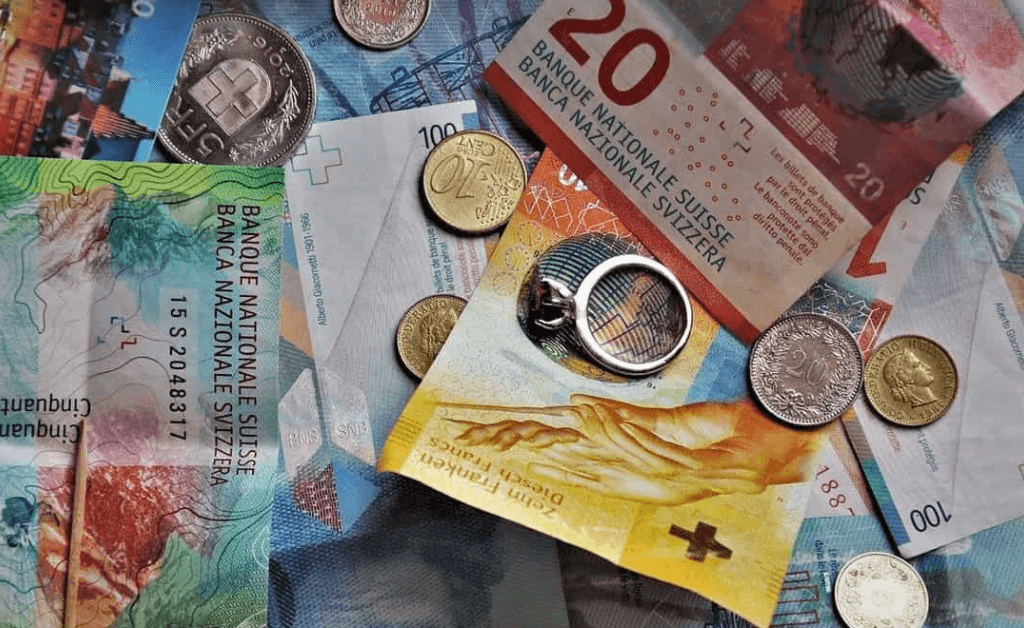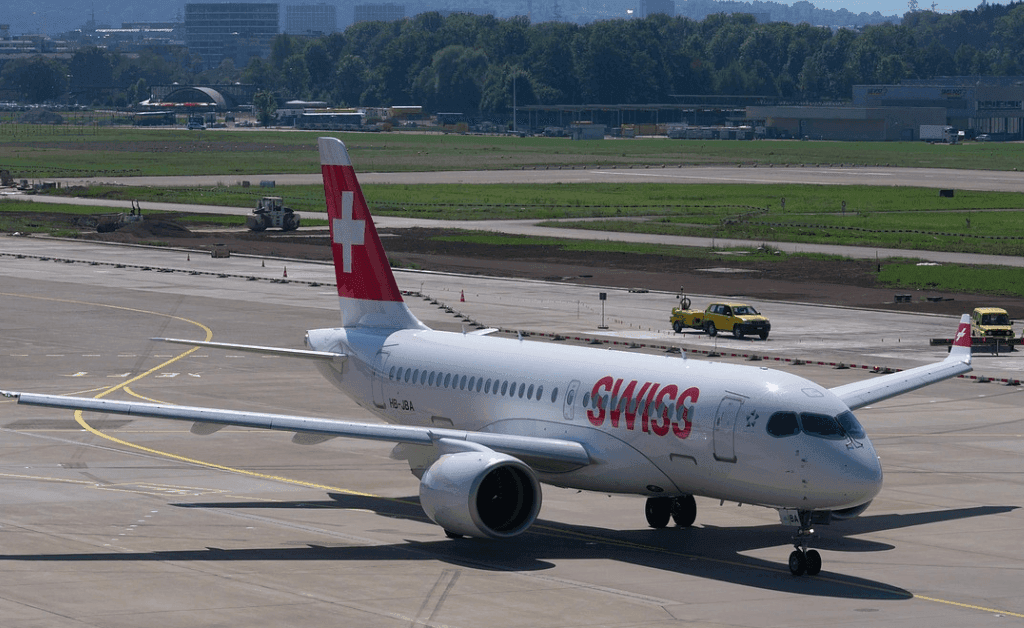Dreaming of jagged peaks reflected in turquoise lakes, charming alpine villages, and world-class chocolate, all experienced on your own terms? Switzerland calls to the solo adventurer! But let’s be honest, the whispers about its eye-watering prices can be louder than a cowbell chorus. Visions of CHF 10 coffees and CHF 100 train rides might make you think a solo trip to this stunning country is just a pipe dream if you’re watching your wallet. Well, think again! While Switzerland certainly *can* be expensive, traveling solo here on a budget is absolutely achievable with smart planning and insider know-how. This guide is packed with actionable tips to help you experience the magic of Switzerland without emptying your savings account. Get ready to conquer those mountains, not your bank balance!
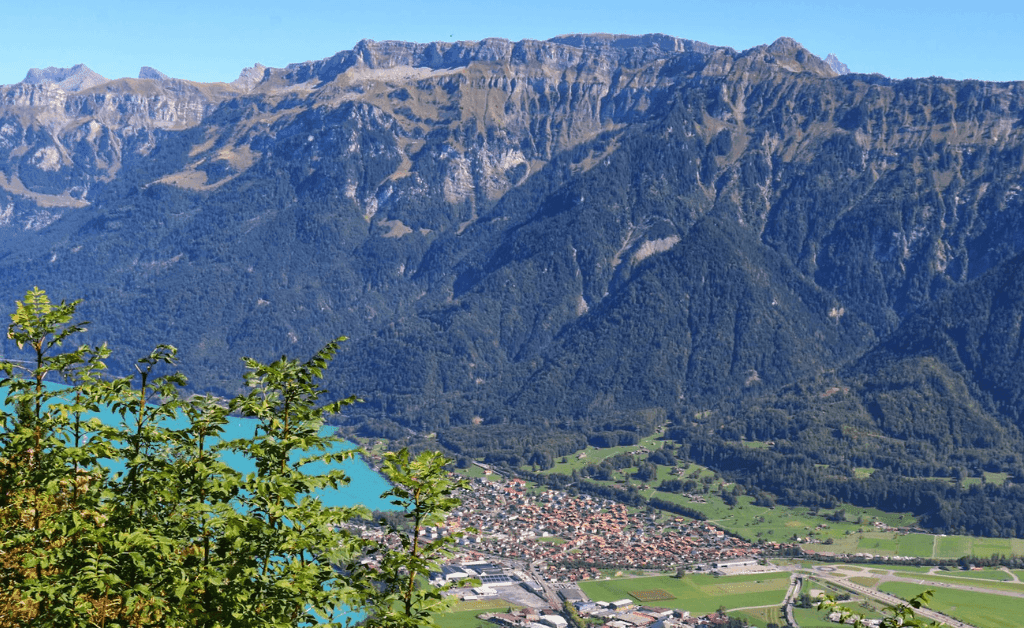
Key Takeaways: Switzerland Solo & Budget-Friendly
- Travel Off-Peak: Visiting during shoulder seasons (spring/autumn) significantly cuts costs on flights and accommodation.
- Embrace Hostels: Switzerland has excellent, clean, and sociable hostels – perfect for solo travelers wanting to save money and meet people.
- Master Public Transport Passes: Investing in a Swiss Travel Pass or Half Fare Card is often crucial for saving big on Switzerland’s efficient but pricey train network.
- Supermarket Savvy is Key: Utilize Coop and Migros supermarkets for affordable meals, picnics, and snacks instead of relying solely on restaurants.
- Prioritize Free Activities: Hiking, swimming in lakes, exploring towns on foot, and enjoying scenic views cost little to nothing.
- Plan & Book Ahead: Especially for accommodation and potentially Saver Day Passes for trains, booking in advance secures better prices.
- Stay Connected Smartly: Use eSIMs or leverage free Wi-Fi to avoid expensive roaming charges.
Why Switzerland is Perfect for Solo Travelers (Even on a Budget!)
Before diving into the budget hacks, let’s reinforce why Switzerland is a fantastic destination for solo travelers, despite its reputation:
- Incredibly Safe: Switzerland consistently ranks as one of the safest countries globally. As a solo traveler, this peace of mind is invaluable. You can explore cities and trails with confidence. Check out my Switzerland travel safety tips for 2025 for more details.
- Efficient Public Transport: The Swiss Travel System is legendary for its punctuality, cleanliness, and coverage. Getting around solo is a breeze, even without a car. You can relax and enjoy the scenery instead of navigating unfamiliar roads.
- Stunning Natural Beauty: From the Matterhorn to Lake Geneva, the landscapes are simply breathtaking. Hiking trails are well-marked, making solo adventures accessible and rewarding.
- Easy Communication: While Switzerland has four official languages, English is widely spoken, especially in tourist areas, making interactions smooth.
- Plenty to Do Solo: Whether you love museums, hiking, photography, or simply enjoying a coffee with a view, Switzerland offers countless activities that are perfectly enjoyable alone.
Now, let’s tackle that budget!
Planning Your Budget Solo Trip to Switzerland
The foundation of a budget-friendly trip lies in solid planning. Here’s where to start:
Choose the Right Time to Visit
Peak season (July and August, plus Christmas/New Year) means peak prices and crowds. For significant savings, target the shoulder seasons:
- Spring (April to June): Witness blooming flowers, melting snow in the mountains (some higher trails might still be closed), and enjoy pleasant temperatures. Prices are generally lower than summer.
- Autumn (September to October): Experience stunning fall foliage, crisp air perfect for hiking, and fewer tourists. Prices drop after the summer rush.
The off-season (November to March, excluding ski resorts during peak ski weeks) offers the lowest prices but be prepared for colder weather, potential rain/snow in lower elevations, and some attractions/cable cars being closed. However, cities are still vibrant, and lower-altitude walks can be beautiful.
Want more details? Discover the best month to visit Switzerland based on your preferences.

Set a Realistic Daily Budget
Even on a budget, Switzerland isn’t Southeast Asia. Be realistic. Aiming for CHF 70-100 per day is a common budget target, covering hostel accommodation, supermarket food/picnics, transport (factoring in a pass), and mostly free activities. This excludes flights and major splurges.
- Accommodation: CHF 35-55 (Hostel dorm)
- Food: CHF 20-30 (Supermarket focus)
- Transport/Activities: CHF 15-25 (Average daily cost with a pass + free activities)
This is a guideline. Your spending will vary based on your travel style, location, and chosen activities. Track your expenses using an app to stay on target.
Essential Pre-Trip Bookings
Flights: Book flights well in advance, especially if traveling near shoulder seasons. Use flight comparison sites and be flexible with dates if possible. Consider flying into Zurich (ZRH), Geneva (GVA), or even nearby airports like Milan (MXP) if significantly cheaper (factor in train costs to Switzerland).
Check flight deals on CheapOair for potential savings.
Accommodation: Especially hostels in popular areas, book ahead! Good budget options fill up quickly. Use platforms that aggregate choices.
Travel Passes: Research and potentially purchase your Swiss Travel Pass or Half Fare Card online before you arrive to save time and potentially get early bird offers.
Slashing Accommodation Costs: Your Home Away From Home
Accommodation is often the biggest expense. Here’s how solo travelers can save:
Hostels: The Solo Budget Staple
Switzerland boasts a network of high-quality hostels (Jugendherbergen). Forget dingy dorms; Swiss hostels are typically clean, safe, well-located, and offer fantastic amenities. They are ideal for solo travelers:
- Cost-Effective: Dorm beds are significantly cheaper than hotel rooms.
- Social Atmosphere: Easily meet other travelers in common areas, kitchens, or during hostel-organized activities.
- Kitchen Facilities: Most hostels have guest kitchens, allowing you to cook your own meals – a massive money-saver!
- Helpful Staff: Get local tips and advice on budget activities.
- Often Include Breakfast: Many offer a basic but filling breakfast included in the price.

Book hostels through dedicated platforms like Hostelworld, which specialize in this type of accommodation. You can also find them on broader sites like Booking.com and Agoda.
Budget Hotels & Guesthouses
If dorms aren’t your style, look for budget-friendly hotels or guesthouses (Gasthäuser/Pensionen). These might offer simpler rooms, sometimes with shared bathrooms down the hall, at a lower price point than mid-range hotels. Platforms like Expedia, Booking.com, Agoda, and Trip.com are great places to compare prices. Filter by price and check reviews carefully.
Consider Alternative Stays
Airbnb (Private Rooms): Renting a private room in someone’s apartment via Airbnb can sometimes be cheaper than a budget hotel and offers a more local experience, potentially with kitchen access. Be sure to compare prices including cleaning and service fees.

Farm Stays (Agrotourismus): For a unique and often more affordable rural experience, look into farm stays (“Schlaf im Stroh” – sleep in straw, or simpler B&Bs on farms). This might require more flexibility with location and transport but can be very rewarding.
Location, Location, Location (But Slightly Off-Center)
Staying right in the heart of Zurich’s Bahnhofstrasse or overlooking the Matterhorn in Zermatt comes with a premium price tag. Consider accommodation slightly outside the main tourist hubs or in neighboring towns.
- Example: Instead of staying in Interlaken (which is more of a transport hub), look at hostels or guesthouses in nearby villages like Wilderswil, Bönigen, or even further up the valleys (Lauterbrunnen, Grindelwald – though these can also be pricey, compare options).
- Example: Near Lucerne, look for options across the lake or in towns easily reachable by train/bus like Kriens or Horw.
Thanks to Switzerland’s excellent public transport, staying slightly further out is often very manageable and can save you significantly. Just factor in commute times.
Explore accommodation options in popular Swiss destinations:
- Zurich: Find deals on Expedia | Compare prices on Agoda
- Lucerne: Check Expedia for Lucerne stays | See Lucerne options on Agoda
- Interlaken Area: Browse Interlaken hotels on Expedia
- Grindelwald: View Grindelwald accommodation
- Zermatt: Explore Zermatt stays
Mastering Transportation on a Budget: Getting Around Switzerland
Switzerland’s public transport is phenomenal but can be a major budget item. Understanding the pass system is crucial for solo travelers planning to move around.
The Swiss Travel System Explained (Briefly)
The system includes trains (SBB/CFF/FFS), buses (PostBus), boats, and even many urban trams and buses. It’s integrated, meaning tickets and passes often cover multiple modes of transport. Trains are the backbone for inter-city travel. Swiss trains offer efficient and incredibly scenic journeys.

Swiss Travel Pass vs. Half Fare Card vs. Regional Passes
This is the most critical decision for budget transport. Here’s a breakdown:
| Pass Type | What it Covers | Pros | Cons | Best For |
|---|---|---|---|---|
| Swiss Travel Pass Learn more & buy here | Unlimited travel on trains, buses, boats; public transport in 90+ towns; free entry to 500+ museums; 50% off most mountain railways/cable cars (some fully covered like Rigi, Stanserhorn). Available for 3, 4, 6, 8, or 15 consecutive days. | – Ultimate convenience (hop on/off) – Includes museums – Covers panoramic trains (seat reservation extra) – Easy budgeting | – Higher upfront cost – Only worth it if traveling extensively – Discount on expensive peaks (e.g., Jungfraujoch) is only 25% from Wengen/Grindelwald, or 50% below these points. | Solo travelers planning lots of travel over consecutive days, visiting many museums, and valuing convenience. |
| Swiss Half Fare Card Check price & details | 50% discount on almost all trains, buses, boats, and mountain transport. Valid for one month. | – Lower upfront cost – Flexible (pay as you go at half price) – Excellent value if doing expensive mountain excursions – Good for longer stays or less intensive travel days | – Need to buy tickets for every journey (can use SBB app) – Doesn’t include museum entry – Total cost depends on how much you travel | Solo travelers doing several expensive mountain trips, staying longer, or preferring flexibility over all-inclusive. Often the best value overall. |
| Regional Passes (e.g., Berner Oberland Pass, Tell Pass – Central Switzerland) | Unlimited travel within a specific region, often including more mountain transport fully covered than the STP. | – Excellent value if focusing intensely on one region – Can cover more high-mountain excursions fully | – Limited geographic scope – Need separate tickets to reach the region | Solo travelers spending several days deeply exploring one specific area (e.g., Jungfrau region or around Lake Lucerne). |
Which one for YOU?
- Do the math! Roughly estimate your planned journeys using the SBB Mobile app (iOS/Android). Check the full fare cost vs. the cost with the Half Fare Card (+ card cost) vs. the Swiss Travel Pass cost.
- Factor in museums: If you plan on visiting many museums included in the Swiss Travel Pass, it adds significant value.
- Consider mountain trips: High mountain excursions (Jungfraujoch, Schilthorn, Gornergrat) are expensive. The Half Fare Card usually offers better savings (50%) on these than the Swiss Travel Pass (often 25-50%).
For many budget solo travelers covering multiple regions, the Swiss Half Fare Card often provides the best balance of cost savings and flexibility. However, the convenience and museum access of the Swiss Travel Pass are appealing if your itinerary matches.
Explore the Swiss Travel Pass: Everything You Need to Know for an in-depth comparison.
Point-to-Point Tickets & Saver Day Passes
If you’re only making a few specific journeys or staying put in one place for a while:
- Point-to-Point Tickets: Simply buy tickets for individual journeys. Can be expensive for longer distances. Look for “Supersaver tickets” on the SBB app/website – these are discounted tickets for specific train connections, booked in advance, non-flexible.
- Saver Day Pass: Like a 1-day Swiss Travel Pass, offering unlimited travel on the network for a specific day. Prices vary depending on how far in advance you book and whether you have a Half Fare Card (much cheaper with one!). Can be excellent value for long travel days if booked early. Check availability and prices on the SBB app/website.
Consider Buses (PostBus)
The yellow PostBuses reach almost every corner of Switzerland, including remote valleys and villages where trains don’t go. They are covered by the Swiss Travel Pass and discounted with the Half Fare Card. Sometimes they offer scenic alternatives to trains, though they are generally slower for long distances.
Walking & Cycling: Free & Healthy!
Don’t underestimate the power of your own two feet! Exploring cities and towns on foot is the best way to discover hidden gems and save money. Switzerland also has extensive cycling paths. Renting a bike can be a fun and relatively affordable way to explore flatter areas like around lakes or along river valleys.
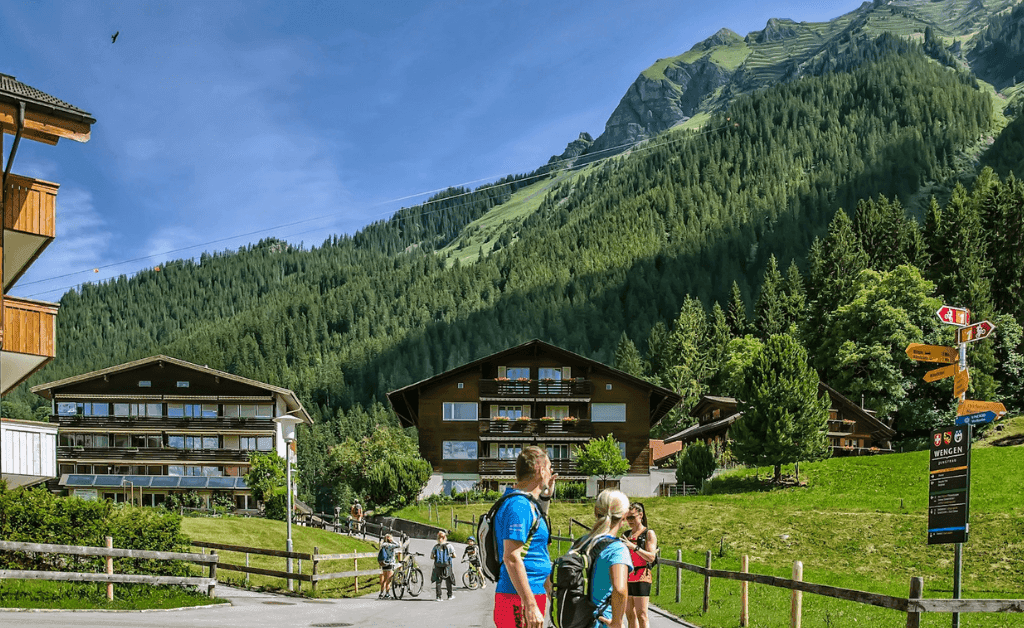
Car Rental for Solo Travelers? Probably Not Budget-Friendly
While offering flexibility, renting a car in Switzerland as a solo traveler is rarely the budget option. Consider:
- Rental costs
- High fuel prices
- Vignette (motorway tax sticker) cost
- Expensive parking (especially in cities and tourist spots)
- Many scenic mountain areas are car-free anyway.
Public transport is usually more efficient and cost-effective for solo travel. If you absolutely need a car for a specific reason, compare prices carefully on sites like Discover Cars.
Eating Well Without Breaking the Bank: Swiss Food on a Budget
Dining out for every meal in Switzerland will quickly drain your funds. Here’s how to eat deliciously and affordably:
Supermarket Savvy: Your Budget Best Friend
The major Swiss supermarkets, Coop and Migros, are your go-to for budget eats. They are everywhere and offer:
- Fresh bread, cheese, cured meats: Perfect for assembling picnics.
- Yogurt, muesli, fruit: Affordable breakfast options.
- Pre-made salads and sandwiches: Cheaper than cafes.
- Hot food counters (Coop Restaurant / Migros Restaurant): Many larger stores have self-service restaurants offering decent hot meals at reasonable prices (especially lunch).
- Groceries for cooking: If your hostel has a kitchen, buying pasta, sauce, veggies, etc., is the cheapest way to eat dinner.
- Chocolate! Buy world-class Swiss chocolate bars here for a fraction of the price in tourist shops.
Lidl and Aldi are also present in Switzerland and offer even lower prices, though they have fewer locations than Coop/Migros.
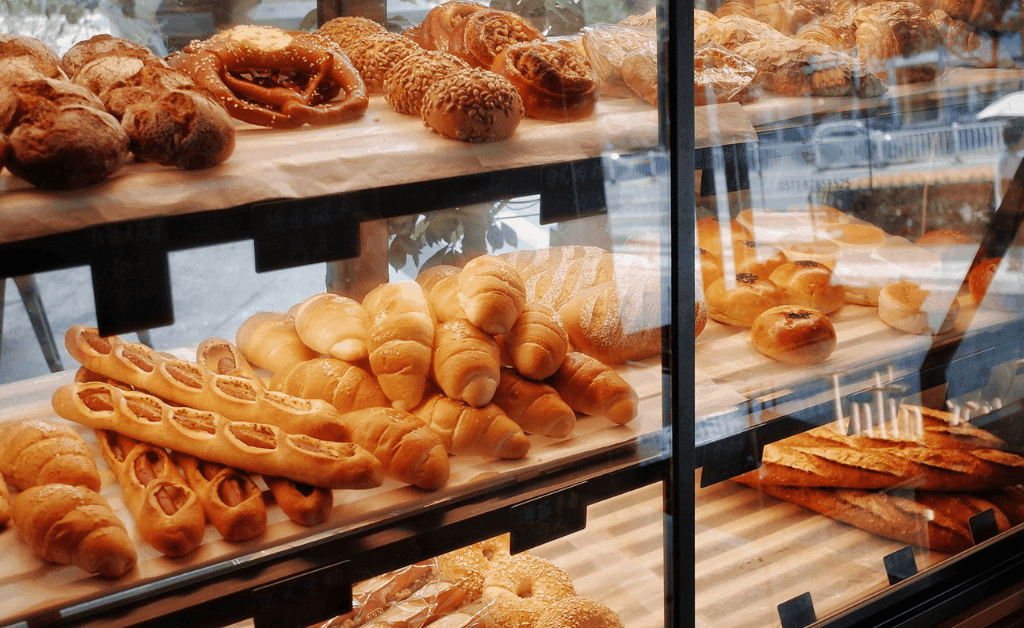
Picnics with Million-Dollar Views
Why pay CHF 30 for a restaurant lunch with a view when you can assemble a delicious picnic from the supermarket for CHF 10 and enjoy it by a lake, on a mountain bench, or in a city park? Pack some bread, local cheese (Gruyère, Emmental), some Landjäger sausage, fruit, and chocolate – perfection!
Takeaway & Street Food Options
Look for casual takeaway spots:
- Bakeries (Bäckerei/Confiserie): Offer sandwiches (belegte Brötli), pastries, and quiches that make a good budget lunch.
- Butchers (Metzgerei): Sometimes have hot counters with sausages or meatloaf sandwiches (Fleischkäse).
- Bratwurst stands: A classic Swiss street food, often found at markets or train stations.
- Kebab shops: Widely available in cities and offer filling meals at lower prices.
Look for Lunch Specials (Mittagsmenü)
If you want to experience a restaurant meal, lunch is usually cheaper than dinner. Many restaurants offer a “Mittagsmenü” or “Tagesteller” (menu of the day) on weekdays – typically a set menu with a soup or salad and a main course for a more reasonable price (around CHF 18-25).
Utilize Hostel Kitchens
As mentioned, cooking your own dinners in the hostel kitchen is a huge money-saver. It’s also a great way to meet other travelers – share ingredients or cook together!
Limit Restaurant Meals & Drinks
Save restaurant meals for special occasions or to try a specific Swiss dish like traditional cheese fondue (best shared to lower cost). Drinks, especially alcohol, add up quickly in bars and restaurants. Buy beer or wine at the supermarket for a fraction of the price.
Tap Water is Your Friend
Swiss tap water is of excellent quality and perfectly safe (and delicious!) to drink. Carry a reusable water bottle and refill it from taps and public fountains (unless marked “Kein Trinkwasser” / “Eau non potable”). Avoid buying expensive bottled water.
Consider a durable, reusable bottle like those found View on Amazon (Example: Klean Kanteen).
Affordable Activities & Sightseeing: Experiencing Swiss Wonders
You don’t need to spend a fortune to experience Switzerland’s beauty.
Embrace Free Activities
Switzerland’s greatest asset – its nature – is largely free to enjoy:
- Hiking: Countless well-marked trails for all levels. Just pay for transport (or choose hikes starting from your base).
- Swimming in Lakes & Rivers: Many lakes and some rivers have designated swimming areas (Badis), some free, some with small entry fees. A refreshing dip on a summer day! Check out Lake Lucerne or Lake Zurich for ideas.
- Exploring Cities & Villages: Wander through charming Old Towns (like Zurich’s Altstadt, Bern’s UNESCO site, Lucerne’s Chapel Bridge), admire the architecture, browse markets.
- Window Shopping: Admire fancy watches or delicious chocolates without buying!
- Visiting Churches: Most historic churches (like Grossmünster in Zurich) are free to enter (donations appreciated).
- Enjoying Parks & Viewpoints: Many cities have parks offering great views (like Lindenhof in Zurich or Rosengarten in Bern).

Choose Your Splurges Wisely
You’ll likely want to experience some paid attractions, like a high mountain railway or a scenic train journey. Instead of doing *everything*, pick one or two “splurge” activities that are most important to you.
- Mountain Peaks: Going up Jungfraujoch is iconic but extremely expensive. Consider alternatives like Schilthorn (Piz Gloria), Mount Rigi (free with Swiss Travel Pass!), Mount Pilatus near Lucerne, or Gornergrat in Zermatt. Research views, costs, and discounts with your chosen pass.
- Panoramic Trains: Journeys like the Glacier Express or Bernina Express are spectacular. Remember the Swiss Travel Pass/Half Fare Card covers the route; you only pay extra for mandatory seat reservations. You can also travel the same routes on regular regional trains for free (with STP) or half price (with HFC) without reservations, albeit with more changes and less panoramic windows. Explore The Ultimate Panoramic Train Experience guide.
- Chocolate Factories: A visit to the Lindt Home of Chocolate near Zurich is popular. Book your entry ticket here.
Utilize City Cards
If you plan on spending a couple of days exploring a specific city and visiting multiple attractions, a city card can offer good value. For example, the Zurich Card includes public transport within the city zones and free or discounted entry to many museums. Calculate if the potential savings outweigh the card’s cost based on your plans.
Check for Free Museum Days/Evenings
Some museums might offer free admission on certain days of the month or during specific evening hours. Check the official websites of museums you’re interested in (like the Kunsthaus Zurich) for any special offers.
Guided Tours vs. DIY
While DIY exploring is often cheaper, sometimes guided tours offer value, especially for specific experiences or if they bundle transport and entry fees efficiently. Free walking tours (tip-based) are available in major cities and are great for orientation. For paid tours, compare options on platforms like GetYourGuide and Viator.
Essential Gear for the Budget Solo Traveler in Switzerland
Packing smart can also save you money and hassle. Refer to our detailed Switzerland Packing List, but here are budget-specific essentials:
- Reusable Water Bottle: Essential for staying hydrated cheaply.
- Travel Adapter: Switzerland uses Type J outlets. Bring a universal adapter.
- Portable Charger (Power Bank): Keep your phone charged for navigation, photos, and booking tickets on the go. Check on Amazon
- Comfortable Walking Shoes: You’ll be doing a lot of walking!
- Basic First-Aid Kit: Include pain relievers, blister plasters, antiseptic wipes. Buying these locally can be pricier.
- Swiss Army Knife: Handy for picnics (cutting bread/cheese), opening packages, and minor repairs. Check airline regulations for carrying. See our guide to the 6 best Swiss Army Knives.
- Packing Cubes: Help organize your luggage, especially useful if staying in hostels. Find them on Amazon
- Quick-Dry Towel: Hostels sometimes charge for towels; bring your own lightweight one.
- Padlock: For hostel lockers. Amazon Bestsellers
Amazon Affiliate Recommendation
Staying Connected Affordably
Avoid hefty roaming charges with these options:
eSIMs vs. Local SIMs
eSIMs: If your phone supports eSIMs, this is often the most convenient option. Purchase a data plan online before you travel and activate it upon arrival. Providers like Yesim offer various data packages for Switzerland or Europe. This avoids fiddling with physical SIM cards.
Local SIM Cards: You can buy prepaid SIM cards from providers like Swisscom, Salt, or Sunrise at the airport or in stores. This might be slightly cheaper for very heavy data users, but requires ensuring your phone is unlocked and involves swapping SIMs.
Utilize Free Wi-Fi
Free Wi-Fi is widely available in hostels, hotels, cafes, train stations, and sometimes on trains/buses (though often requiring registration). Maximize its use for heavy downloads, video calls, and research to save mobile data.
Safety Tips for Solo Travelers (Budget Context)
While Switzerland is very safe, general solo travel precautions apply:
- Be Aware of Surroundings: Especially in crowded stations or tourist spots, keep an eye on your belongings.
- Secure Valuables: Use hostel lockers. Don’t flash expensive gear unnecessarily.
- Inform Someone of Your Plans: Let a friend or family member back home know your rough itinerary.
- Trust Your Instincts: If a situation feels uncomfortable, remove yourself from it.
- Budget Accommodation Safety: Reputable hostels in Switzerland are generally very safe. Read reviews focusing on security if you have concerns.
For more comprehensive advice, read our Switzerland Travel Safety Tips.
Don’t Skip Travel Insurance!
This is NOT where you should cut corners to save money. Travel insurance is crucial, especially for solo travelers. It protects you against unexpected medical emergencies (which can be incredibly expensive in Switzerland), trip cancellations, lost luggage, and theft.
Consider reputable providers popular with travelers and digital nomads:
- SafetyWing (Nomad Insurance): Offers flexible monthly plans, good for longer trips or uncertain itineraries. Read more about it here.
- VisitorsCoverage: Compares plans from various insurers, helping you find coverage that fits your needs and budget. Get a quote here.
- EKTA: Another option offering different travel insurance packages. Explore EKTA plans.
Conclusion: Your Swiss Solo Adventure Awaits!
Switzerland might have a reputation for being pricey, but as you’ve seen, a solo trip on a budget is entirely possible with the right strategies. By traveling during the shoulder seasons, embracing hostels and supermarket picnics, choosing the right transport pass, focusing on free natural beauty, and planning ahead, you can experience the incredible landscapes and charming culture of Switzerland without needing a Swiss bank account.
It requires a bit more planning and conscious spending, but the reward – exploring one of the world’s most beautiful countries independently – is well worth the effort. So, start researching, book that flight, pack your reusable water bottle, and get ready for an unforgettable solo adventure in the heart of the Alps!
Use resources like Tripadvisor to read recent traveler reviews on hostels, restaurants, and attractions to get the latest budget insights.
Frequently Asked Questions (FAQ)
What is a realistic daily budget for a solo traveler in Switzerland?
A realistic budget target is around CHF 70-100 per day. This typically covers a hostel dorm bed, food primarily from supermarkets (picnics, cooking), the averaged daily cost of a travel pass, and mostly free activities like hiking and exploring towns. It excludes flights, travel insurance, and major splurges like expensive mountain railways or fancy restaurants.
Is the Swiss Travel Pass or Half Fare Card better for budget solo travelers?
It depends heavily on your itinerary. The Half Fare Card often provides better value if you plan several expensive mountain excursions (as it gives 50% off most) and offers more flexibility. The Swiss Travel Pass is better if you prioritize convenience (no need to buy tickets), plan extensive travel on consecutive days, and intend to visit many included museums. Do the math based on your planned trips!
What’s the cheapest way to eat in Switzerland?
The cheapest way is to buy groceries at supermarkets like Coop, Migros, Lidl, or Aldi and prepare your own meals. Utilize hostel kitchens for cooking dinner, and pack picnics for lunch (bread, cheese, fruit). Look for supermarket restaurants (Coop/Migros Restaurant) for affordable hot meals. Always drink tap water.
When is the cheapest time to visit Switzerland?
The cheapest times are the shoulder seasons (spring: April-June, autumn: September-October) and the off-season (November-March, outside major holidays and peak ski weeks in resorts). Avoid July, August, and the Christmas/New Year period for the best prices on flights and accommodation.
Is Switzerland safe for solo female travelers?
Yes, Switzerland is considered extremely safe for solo female travelers. Crime rates are low. Standard precautions like being aware of your surroundings, especially at night or in crowded areas, and securing your belongings are always recommended, but generally, it’s a very comfortable and safe country to explore alone.
Can I get by with just English in Switzerland?
Yes, in tourist areas, hotels, restaurants, train stations, and shops, English is widely spoken and understood. While learning a few basic phrases in German, French, or Italian (depending on the region) is always appreciated, you can comfortably navigate Switzerland as a solo traveler using English.
Disclosure: This post contains affiliate links. If you buy through them, I’ll earn a small commission at no extra cost to you. Thanks for supporting my work!

